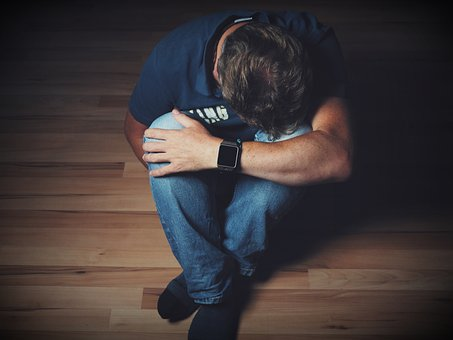A touch phobia is known as haphephobia. Despite being rare, it can be a terrible phobia. It belongs to the group of phobias called specific phobias, which are anxieties of a particular thing or circumstance. Haphephobia is the fear of being touched, while some persons are simply terrified of being touched by someone who are not of their own gender.
It is unusual when an unreasonable fear of being touched is unrelated to other anxiety-related illnesses like social phobia (social anxiety disorder) or a fear of exposure to vulnerability or intimacy. Many haphephobics are able to develop close, warm relationships with others, but they may worry that because they are unable to express physical affection, those relationships are in danger.
It can be quite challenging for both strangers and close friends and family to comprehend haphephobia. When you turn away, the individual who was providing the touch can feel rejected.
The degree of haphephobia’s symptoms can vary. Some people with this phobia may develop sufficient trust with one or two particular people over time in order to get over their reactions. Additionally, they could expressly consent to their own or another person’s initiating touch. Others still experience discomfort whenever they are touched.
If you have haphephobia, you can react to your trigger in a similar way to someone who has another specific phobia.
You might:
- Cry
- Freeze
- Run
- Shake
- Sweat
Additionally, people can suffer from panic episodes, which are marked by a sense of impending doom, a quick heartbeat, and rapid breathing.
A specific phobia commonly has avoidance as one of its symptoms. Affected individuals with haphephobia may avoid:
- By making an effort to keep your hands full, you can get more handshakes and embraces.
- Those that you believe are romantically interested in you
- In social circumstances where you worry that people may anticipate physical contact
The need for touch and human contact is innate, and being unable to experience that contact can lead to feelings of isolation and loneliness, which can worsen mental health problems.
Although the precise origins of haphephobia are unknown, several factors may be at play. Like other specific phobias, developing a phobia can be influenced by genetics, family history, experiences, and general temperament.
Family history: Since fears can be picked up through observation, witnessing family members who also suffer from phobias or other anxiety disorders may increase the likelihood that oneself.
Traumatic events: Other traumas, such as sexual assault, may also be important. Any unpleasant touch-related experiences may have the potential to cause the syndrome.
According to research, women are twice as prone as males to suffer from particular phobias like haphephobia. The possibility of developing a particular phobia is also increased by having another kind of fear or a mental health issue. The DSM-5 estimates that 75% of people who have particular phobias also have other phobias.
It appears to occur more frequently without a known cause. This is accurate in many instances of particular phobias. Although the triggering circumstance could happen at any moment in life, the majority of persons who cannot link their haphephobia to a specific event first experienced the fear as children.
Specific phobias are fortunately very curable. Around 80% to 90% of patients with specific phobias respond favorably to treatment. There are numerous therapy possibilities, including the following:
Medication
Sometimes doctors will recommend antidepressants and anxiety drugs to help people manage the symptoms of particular phobias like haphephobia. The most successful use of these drugs frequently involves pairing them with psychotherapy.
Psychotherapy
Specific phobias are frequently treated with exposure therapy. This method of treatment involves both the use of relaxation techniques as well as gradually exposing patients to the object they are afraid of. The fear response gradually starts to lessen in intensity.
Another remedy frequently suggested for certain phobias is cognitive-behavioral therapy (CBT).
This kind of therapy deals with the unfavorable beliefs and misconceptions that support the emergence and maintenance of phobias.
There are actions you may take on your own to make it easier to cope with your condition in addition to receiving therapy for it. A few of these are:
Take good care of your physical and emotional health: Get enough of rest, maintain a balanced diet, engage in regular exercise, and learn techniques for unwinding and handling stress.
Get support: It helps to have friends and relatives who can relate to you and who will stand by you. Joining a self-help group where you can speak to people going through similar circumstances will likely be helpful for you as well.
Attempt to refrain from feeding your fear: Your phobia is reinforced and made worse through avoidance coping. This doesn’t imply that you must face your fear head-on, but discovering strategies for exposing yourself to your fear gradually will help you get over it.
Couples or family counseling can assist those who are closest to you in comprehending your fear and finding new methods to show their love for you. Choose a therapist you can trust and establish a therapeutic relationship with, and be prepared for the process to take some time.
Deeply traumatic situations might lead to the development of the dread of being touched. Such reactions are natural, and therapy can help people manage their haphephobia symptoms as well as their memories of the event.
It’s critical to speak with a mental health professional if your fear prevents you from meeting your basic needs. Although you might never feel completely at ease being touched, you can work hard to control your anxious responses.
If you are looking for “Online Therapists in India“, contact TalktoAngel, a platform that connects the best online therapists with “Online Psychological Counseling“.

